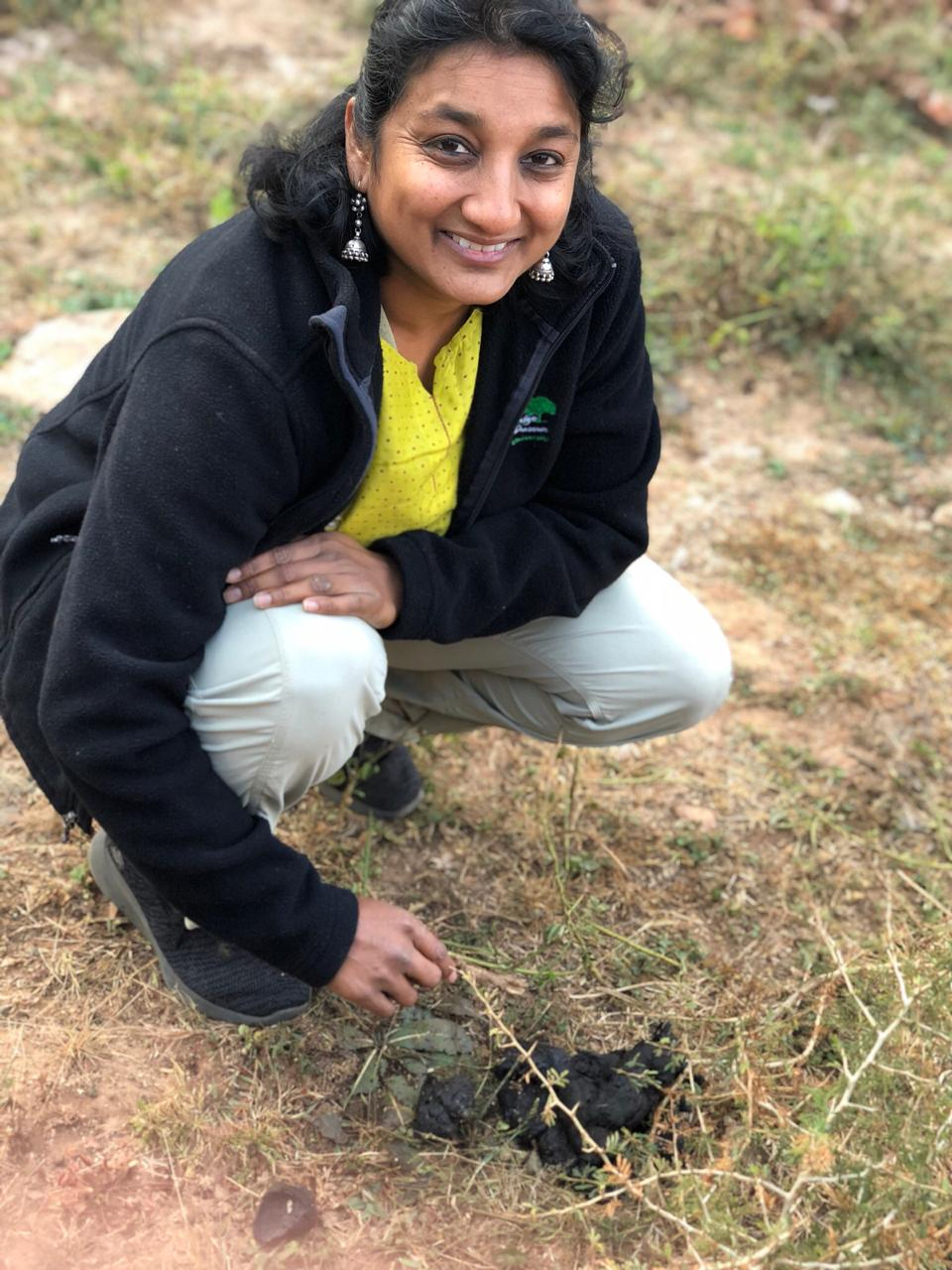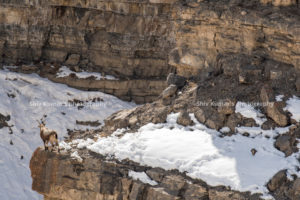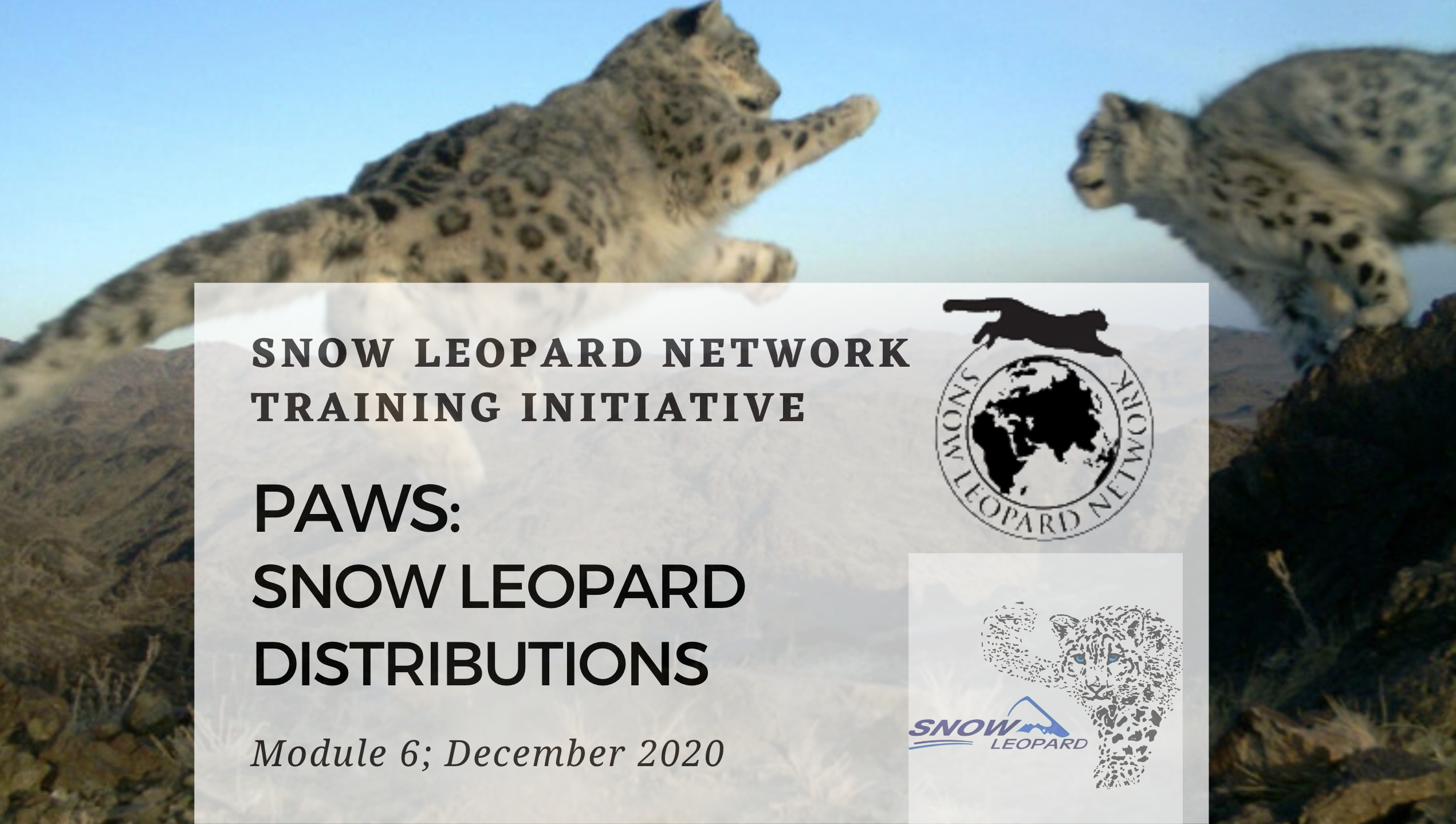
We are thrilled to build on Module 1 of the SLN training initiative which focussed on camera trapping surveys to assess snow leopard abundance. This coming Module focusses on assessing snow leopard or prey distributions across landscapes. Both Module 1 and 6 aim to support the PAWS (Population Assessing of the Worlds Snow leopards) initiative and are offered thanks to the GSLEP Programme partnership. If you have the opportunity please join us for this 2nd PAWS training module.
Course Content
To estimate how many snow leopards there are, we also need to know where they are. Assessment of the status and distribution of rare and elusive species such as the snow leopard is challenging. Recent surveys in some parts of the snow leopard range have indicated that our understanding of the species’ distributions might not be as accurate as previously thought. To minimize subjectivity and maximize replicability and reliability, it is important to address imperfect detection probability in estimating species distribution.
Occupancy surveys can be implemented with a variety of sampling methods, spatial extents, and effort levels. Assessing the distribution of a species at local and regional scales may also help track changes over time and gauge the effects of potential threats by comparing local extinctions and colonizations over time. Probability of site use
or occupancy, as a function of habitat can also help define strata for which specific intensive sampling strategies using spatial capture recapture methods can be developed.
Module 6 aims to equip participants with the knowledge and tools to plan and carry out snow leopard distribution survey across large areas using interviews of key informants, sign surveys, camera traps and genetic surveys. We will discuss means and workflows to collect, process and organize data in a way that it can be used for occupancy analyses. Additionally, we will be sharing the latest Macro level methods and tools recommended by the PAWS GSLEP Programme. The Macro Level design tools provide recommendation for assessing snow leopard distribution across large area (5,000 sq km) and how to select sites for more intensive surveying. Distribution estimates of occupancy can be obtained by conducting interview surveys, camera trapping or sign based occupancy methods. The module will cover key concepts underlying occupancy models and taking into account detection probability.
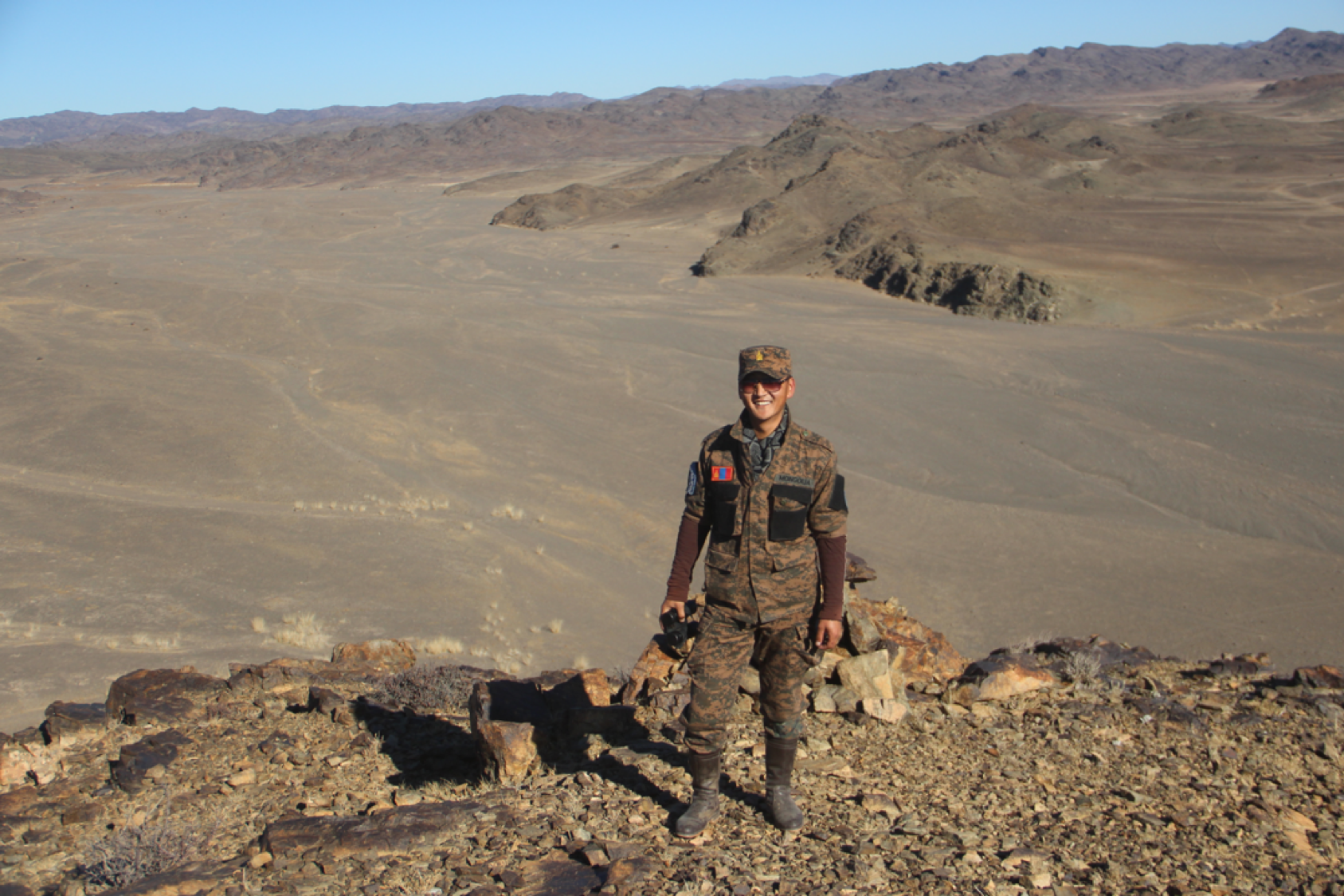
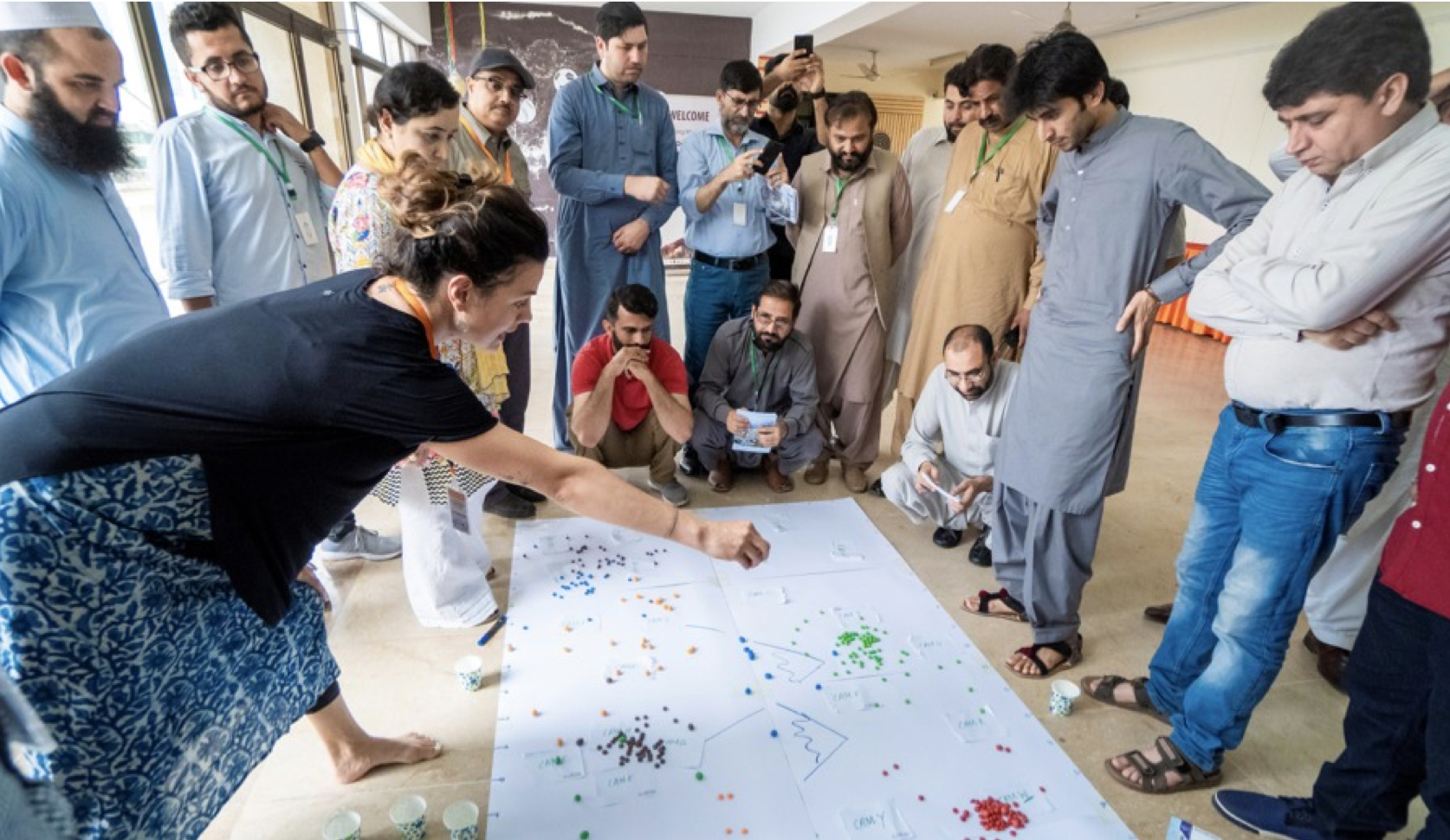
Meet the Trainers
Dr. Koustubh Sharma: Koustubh is the International Coordinator of the Global Snow Leopard and Ecosystem Protection Program and a Senior Regional Ecologist with the Snow Leopard Trust. He, along with Justine help coordinate Population Assessment of the World’s Snow Leopards (PAWS) as a GSLEP initiative. He holds a PhD in Wildlife Zoology from Mumbai University, and a Masters degree in Physics. He has undergone training on spatial capture recapture methods at the Centre for Research in Ecological and Environmental Research (CREEM), University of St. Andrews, and on advanced applications of ArcGIS by ESRI. He has been involved with colleagues and partners in developing training tool-kits and delivering training workshops for a suite of ecological methods relevant for snow leopard research and conservation.
Dr. Justine Shanti Alexander: Justine is the Executive Director of the Snow Leopard Network. She provides technical support to GSLEP for the population assessment of the worlds snow leopards (PAWS) and other efforts related to snow leopard conservation. Justine also acts as the Regional Ecologist for the Snow Leopard Trust and supports research and conservation work across the snow leopard range. She holds a PhD in snow leopard population assessments from Beijing Forestry University and a MSc in Conservation Science from Imperial College London.
Dr. Ian Durbach: Ian is part statistician, part operations researcher. He is a research fellow at the Centre for Research into Ecological and Environmental Modelling at the University of St Andrews, where he currently works on two projects: modelling behavioural responses of whales to sonar, and designing the camera trap component of the first range-wide survey of snow leopards. He is also adjunct associate professor in the Department of Statistical Sciences at the University of Cape Town, where he is part of the Centre for Statistics in Ecology, the Environment, and Conservation (SEEC). Ian is also interested in multi-criteria decision modelling (MCDM) for supporting decisions between options whose outcomes are uncertain, and applying machine learning to ecological classification tasks involving images, audio, and video.
Criteria for participation
-
- Snow Leopard Network Member
- Experience of working on snow leopard conservation or concrete plans to be involved in such efforts
- Confirmed availability to attend all the four online seminars of a given module
- Number of participants is limited to 20-30
- Priority will be given to participants from snow leopard range countries
Planned Schedule
-
- 2 hour online Zoom Seminars take place every Wednesday of the month, December 2020 (4 Seminars; December 2nd, 9th , 16th , 23rd) at 14:00 Bishkek, Kyrgyzstan time
- Additional group work, assignments or readings are likely to be organized by the trainers
- Please note we expect all participants to attend the complete set of Seminars as they are interconnected and build on each other
- Details of each specific Seminar topic will be shared approximately 5 days beforehand; including any expected preparations by participants.
Deadline for Applications
-
- Friday, November 20th, 2020. Please note places are limited so please do not delay in applying.
- To apply please check the Criteria for participation and complete the following Application
Kindly note these trainings are free to participants. Also that the trainers are sharing their time and knowledge with us as a gesture to the Network and to snow leopards!

